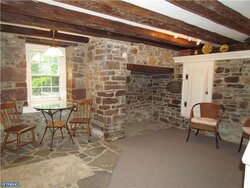So, I noticed this evening that the floor under the "new" Jotul Firelight 12 is much warmer than I'd ever noticed the floor getting on the old stove, so I took some measurements. Both stoves were started cold at the same time, roughly 3.5 hours ago, and both reloaded with a big load approximately 2.5 hours ago. Both have been cruising the last 2 hours with stovetop ~550F and catalyst 1200 - 1400F. In other words, all conditions are roughly equal... with one exception. The old stove has a nice bed of ash from several weeks of burning, whereas the new stove only has minimal ash bed from one half day of burning.
Here are my measurements, all in °F:

The new one seems to be running awful hot for any stove requiring only ember protection. There's no mention of a bottom heat shield for this stove, and externally, everything looks similar to my old stove. I know the ash bed probably makes a difference, but I think 275 on the bottom of the ash pan, and 150 on a masonry floor below is awful hot for any stove requiring only ember protection. No?
Here are my measurements, all in °F:

The new one seems to be running awful hot for any stove requiring only ember protection. There's no mention of a bottom heat shield for this stove, and externally, everything looks similar to my old stove. I know the ash bed probably makes a difference, but I think 275 on the bottom of the ash pan, and 150 on a masonry floor below is awful hot for any stove requiring only ember protection. No?



